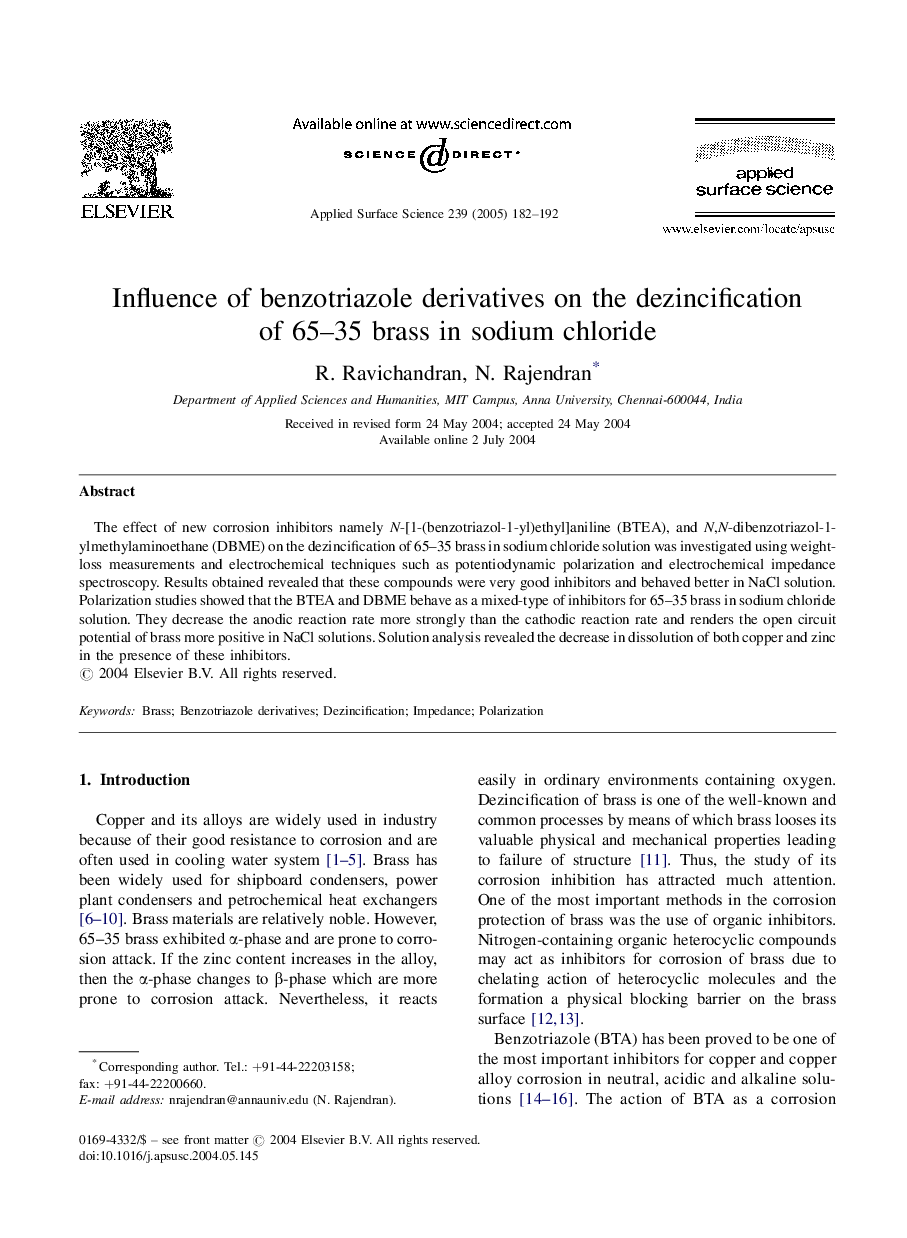| Article ID | Journal | Published Year | Pages | File Type |
|---|---|---|---|---|
| 9568826 | Applied Surface Science | 2005 | 11 Pages |
Abstract
The effect of new corrosion inhibitors namely N-[1-(benzotriazol-1-yl)ethyl]aniline (BTEA), and N,N-dibenzotriazol-1-ylmethylaminoethane (DBME) on the dezincification of 65-35 brass in sodium chloride solution was investigated using weight-loss measurements and electrochemical techniques such as potentiodynamic polarization and electrochemical impedance spectroscopy. Results obtained revealed that these compounds were very good inhibitors and behaved better in NaCl solution. Polarization studies showed that the BTEA and DBME behave as a mixed-type of inhibitors for 65-35 brass in sodium chloride solution. They decrease the anodic reaction rate more strongly than the cathodic reaction rate and renders the open circuit potential of brass more positive in NaCl solutions. Solution analysis revealed the decrease in dissolution of both copper and zinc in the presence of these inhibitors.
Related Topics
Physical Sciences and Engineering
Chemistry
Physical and Theoretical Chemistry
Authors
R. Ravichandran, N. Rajendran,
